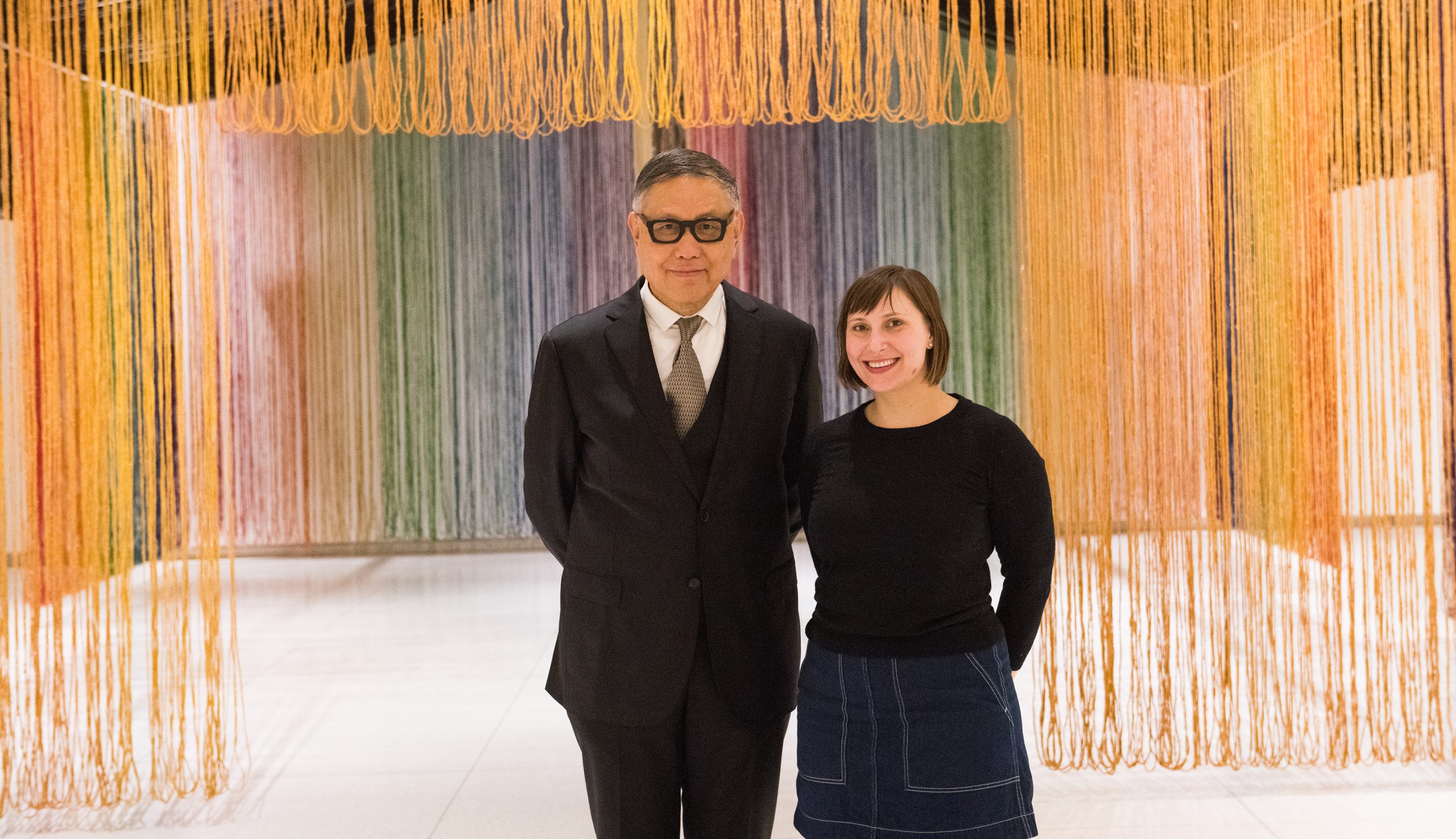Categories
An interview with curators Wu Hung and Orianna Cacchione

In late February, Natalie Hegert interviewed exhibition co-curators Wu Hung and Orianna Cacchione for THE SEEN, Chicago’s International Journal of Contemporary & Modern Art. The interview, excerpted in part below, touches on the origin of the exhibition, the history of key works, and how the coronavirus outbreak impacted the installation of the in early 2020.
Interview excerpts
Natalie Hegert: I wanted to start with the seed for this curatorial endeavor—did the exhibition stem mostly from your research?
Wu Hung: Actually, the inspiration came from a number of directions. One came from my research, another came from the museum. About five years ago, the Smart Museum of Art at the University of Chicago was approached with the idea of organizing a large-scale exhibition on contemporary Chinese art. The Smart had the resources to organize and promote such an exhibition, and deeply understands this work—beginning in the 1990s, the museum organized a series of contemporary Chinese exhibitions. While I am primarily a Professor in the Department of Art History, I also act as an Adjunct Curator at the Smart, and the museum asked me if I had any ideas for this exhibition.
I had been looking at these artists in my research, in contemporary Chinese art and contemporary art in general, for quite a long time. I have always been thinking about a new angle, a new concept, and trying to discover some new themes. The opportunity of an exhibition and my research together allowed me to come up with this concept of ‘material art.’
Orianna Cacchione: I want to underscore that Wu Hung, and the Smart by extension, have truly been leaders in the field of exhibiting contemporary Chinese art—testing the limits of how it is exhibited in the United States. This dates back now twenty-one years to Wu Hung’s first exhibition at the museum, Transience: Chinese Experimental Art at the End of the Twentieth Century, in 1999. Nonetheless, what I think is really important about The Allure of Matter is that it radically proposes new ways of exhibiting contemporary Chinese art—namely, a thematic drive. In this way, thinking of contemporary Chinese art through the lens of materiality becomes very innovative.
NH: As opposed to exhibitions that are just generally contemporary Chinese art?
OC: Right, such as historical surveys.
WH: We have seen quite a few of these surveys at institutions across the US. Sometimes they emphasize historical or political themes. China is always, insistently taken as an “other space.” Of course, in China there’s a different history, both politically and artistically. There is nothing wrong with survey exhibitions, but I do not feel that there is only one way to approach non-Western art. We can find new ways to see it. In The Allure of Matter, for example, we wanted to present these artists in a way that is relatable to an American audience. Through the works included in the exhibition, viewers can discover the artists, their lives, their inspiration, their materials, and how their experiences are different. From there, if viewers want to understand the social experience in China, that is totally fine. But we want the artworks to primarily speak for themselves. So in this exhibition, we try to eliminate restrictions for interpretations. Everyone can see that these works are clearly a part of contemporary art in general, and are not of a niche style exclusive to China. The works presented across the galleries are very diverse; these artists looked to an array of inspirations and represent multiple generations, having grown up in the 1980s, ‘90s, or later.
OC: The exhibition attempts to foreground the art, not the artists’ Chinese identity. This is a very unique aspect of the exhibition, which makes it different from other [Western] exhibitions of contemporary Chinese art.